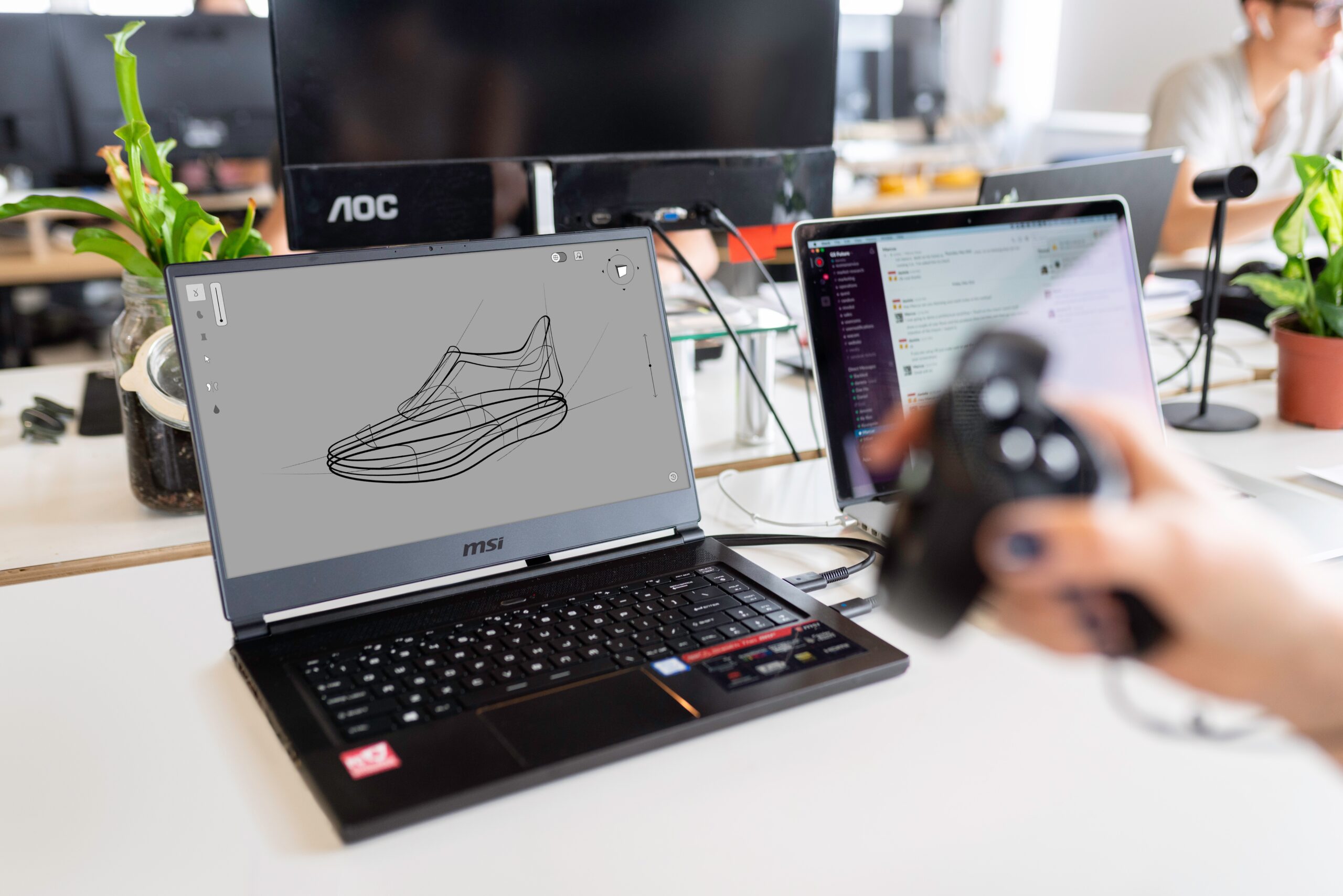The growth of ecommerce is a well-documented trend that will continue into 2023. The ongoing digitization, coupled with evolving customer behavior and expectations, means that the ecommerce space is never static. New technologies and strategies are introduced to eliminate the weaknesses of the field. become the Metaverse and the just through Apple introduced AR/VR glasses the new game changers? One of ecommerce's enduring weaknesses is undoubtedly its difficulty in delivering shopping experiences that are sufficiently personalized and interactive. Despite all the convenience of buying goods from home, customers still crave that captivating and real-life feeling of buying from physical stores. Virtual shopping has emerged as a viable option to bridge the gap between the virtual and real worlds for online shoppers, and it is certainly an option worth exploring for forward-thinking brands.
WHAT IS VIRTUAL SHOPPING?
Virtual shopping is the use of digital technology to replicate the experience of shopping in a physical store on an online platform. It allows customers to explore products and brand representatives while shopping on channels such as websites or mobile apps by using live chat, video chat and other advanced technologies. Simply put, virtual shopping is about providing traditional shopping experiences to customers who buy online. Executing this strategy helps ecommerce brands generate more revenue and remain competitive, while enjoying higher levels of buyer immersion and engagement.
The value of virtual shopping lies in its ability to provide solutions to the limitations of traditional ecommerce. For example, customers often have difficulty properly visualizing how clothing and accessories fit on their body or how furniture would look in their living room. This can lead to buyer hesitation, which can lead to cart abandonment. Additionally, this visualization gap can cause customers to have incorrect expectations prior to purchase, ultimately resulting in... product returns. Another limitation is the lack of real-time assistance in physical stores where customers can talk to salespeople and get information to facilitate purchasing decisions. By seamlessly balancing online and offline, virtual shopping removes these and other limitations for businesses and customers alike.
WHAT ARE THE TECHNOLOGIES IN VIRTUAL SHOPPING?
Virtual shopping relies on modern technologic developments to connect brands with their customers in exciting ways. For customers to enjoy an engaging shopping experience and a personalized shopping experience, they need to be able to browse products in real time and interact with customer service representatives or contact center agents. Here are some of the main technologies that make this possible:
LIVE CHAT
Live chat plays a vital role in delivering quality virtual shopping experiences to customers. It is a tool that connects customers with the representatives of the brand, enabling real-time communication between both parties. Live chat allows customer support agents to respond instantly to customer queries, provide product information and recommendations, and provide real-time order monitoring. This contributes to positive customer experiences.
VIDEO CHAT
Video is quickly becoming the most consumed media, and video chat is certainly having a positive impact on virtual shopping and ecommerce as a whole. This is because face-to-face interactions help improve brand reliability while enabling truly personalized experiences. Using video chat, customers can receive personalized advice from sales representatives to help them make the best possible purchasing decisions. They can also get real-time demonstrations of the product's best features and functionalities and can visually inspect and verify products before purchase. This way, brands can better engage their customers and offer shopping experiences that feel traditional.
3D PRODUCT VISUALIZATION
By integrating 3D product visualization tools into ecommerce, customers can interact with products in exciting ways. With 3D product visualization, customers can view products from multiple angles and zoom in or out to develop more realistic expectations of the product's features, size and design. It gives customers an experience similar to touching the products, helping them better imagine how it fits into their REAL WORLD environment. This reduces the chance of false expectations and product returns while improving customer engagement.
ADDED REALITY (AR)
Augmented reality is a powerful piece of technologie that overlays computer-generated information into the real world, and it certainly has a place in virtual shopping. It enables virtual fitting, which allows customers to virtually try on clothes, accessories and similar products to assess how well they fit their bodies. AR also means customers no longer have to imagine what products look like in their physical environment, as they can use this technologie to visualize products at scale in the real world. By providing such interactive product experiences, AR enables customers to experience products online as they would in physical stores.
VIRTUAL REALITY (VR)
Virtual reality (VR)-technologie allows people to immerse themselves in a completely computer-generated environment. The most common application of this technologie in virtual shopping is building virtual stores to bridge the gap between digital and real shopping. Virtual stores allow customers to navigate shopping aisles, browse product catalogs, and view items before making a purchase. In addition, ecommerce allows brands to organize virtual product demonstrations and simulate use cases with VR. These and other uses of VR provide immersive customer experiences that positively influence customer decision making.
ARTIFICIAL INTELLIGENCE
AI plays a role in every area of human endeavor today, including virtual shopping. With its enormous computing power, AI can analyze customer data and behavior to generate personalized product recommendations for chatbots, virtual assistants or ham representatives to use while interacting with customers. Additionally, AI can perform predictive analytics to help companies anticipate customer demands and preferences and plan other aspects of their virtual shopping experiences before they happen.
WHAT ARE THE BENEFITS OF VIRTUAL SHOPPING FOR ECOMMERCE BUSINESSES?
Every ecommerce company should explore the possibilities of setting up virtual shopping services, even if only on a small scale. This is because it is a strategy with significant benefits for brands and their customers. Here are seven excellent reasons to get started implementing a virtual store today:
HELPS BUILD LASTING CONNECTIONS WITH CUSTOMERS
Given the shifts in customer behavior and the increasing emphasis on customer experience management, ecommerce brands need to understand that selling is no longer enough. It is now imperative to create memorable experiences for customers. Adding a human touch to ecommerce through virtual shopping enables brands to form long-lasting relationships with customers. Live chat and video chat help demonstrate the brand's commitment to customer satisfaction while putting a face to the company. Similarly, AR and VR make the shopping process more exciting by providing engaging and immersive experiences – helping to foster intimate and mutually beneficial relationships.
PERSONALIZATION AND CUSTOMIZATION
Virtual shopping is all about creating memorable experiences, and personalization is certainly a major contributor to that. Virtual shopping platforms use AI algorithms to analyze massive amounts of custom data to understand their needs and preferences. This analysis will then lead to personalized product recommendations, prices and promotions for each customer, increasing satisfaction and loyalty.
Some virtual shopping platforms allow customers to customize the products to their specifications. This includes choosing colors, sizes, materials and other intricate details. 3D product visualization techniques allow customers to see in real time what their custom products look like before they are finally purchased. This reduces the chance of customers being dissatisfied with their purchases, leading to lower product returns.
REDUCES COSTS AND INCREASES SALES
According to Obsess, 70% of customers who shop in a virtual store make a purchase. Similarly, customers using video chat have a 30% higher average order value. The human touch and immersive experience that come with virtual shopping is often a catalyst for more sales opportunities, fewer cart abandonments, and increased revenue.
In addition, virtual shopping contributes to higher profit margins by helping companies cut costs. By running the business virtually, companies can close some of their brick-and-mortar stores and save money on lease or mortgage payments, utilities, maintenance, and staff costs. Virtual shopping also reduces operational costs by reducing the need for your physical stores to stock up on products. Instead, inventory can be stored in an centralized location from which online and in-store orders are fulfilled.
IMPROVED DATA COLLECTION AND ANALYSIS
Virtual shopping offers huge datasets that inform brands about their customers. From time spent on product pages to purchase history, there is a lot of useful data that can be collected for analysis for a comprehensive understanding of each customer. AI-powered analytics can drive the analysis of collected customer data to generate rich and actionable insights. These insights can be used to improve product offerings, optimize inventory management, personalize offers and improve the overall online shopping experience for customers through data-driven decisions.
WORD-OF-MOUTH MARKETING OPPORTUNITIES
88% of people place a lot of trust in recommendations from friends and family. In fact, the power of mouth to mouth advertising is so huge that it generates $6 trillion in annual consumer spending. When your business provides memorable experiences through virtual shopping technologies, customers are likely to talk about it with their loved ones and share their experience through social media. This represents marketing that will attract new customers and open more opportunities for revenue growth while saving advertising and marketing costs.
In short, virtual shopping is essential to provide online shoppers with unforgettable experiences. By implementing live chat, video chat, AR, VR and other advanced technologies, ecommerce brands build strong relationships with customers, save costs and generate more revenue. Therefore, it is important for companies to establish virtual shipping services in this new era of ecommerce.













